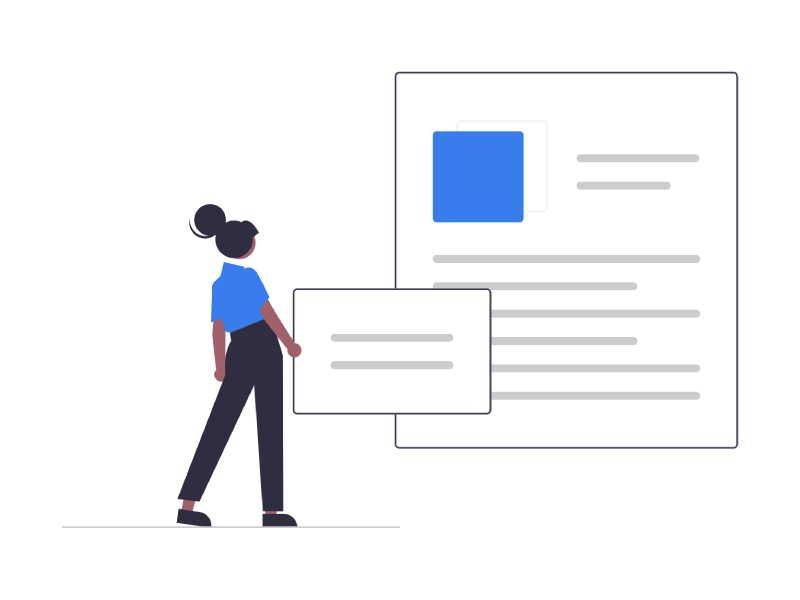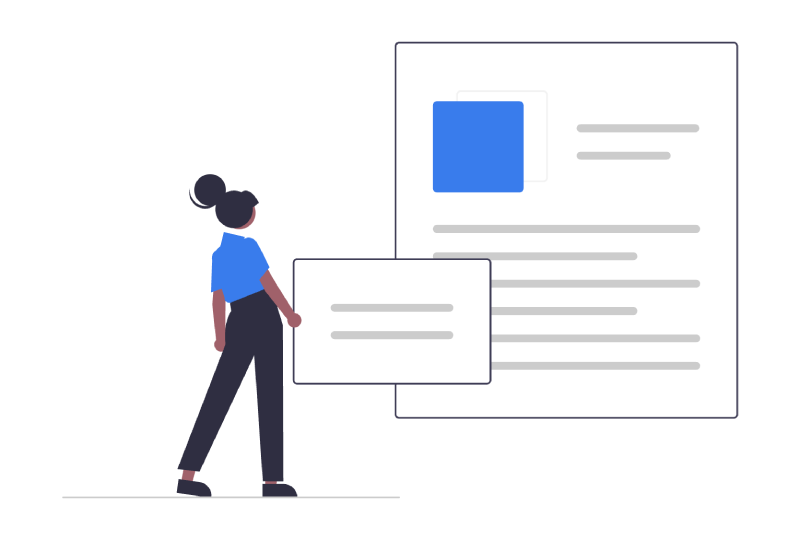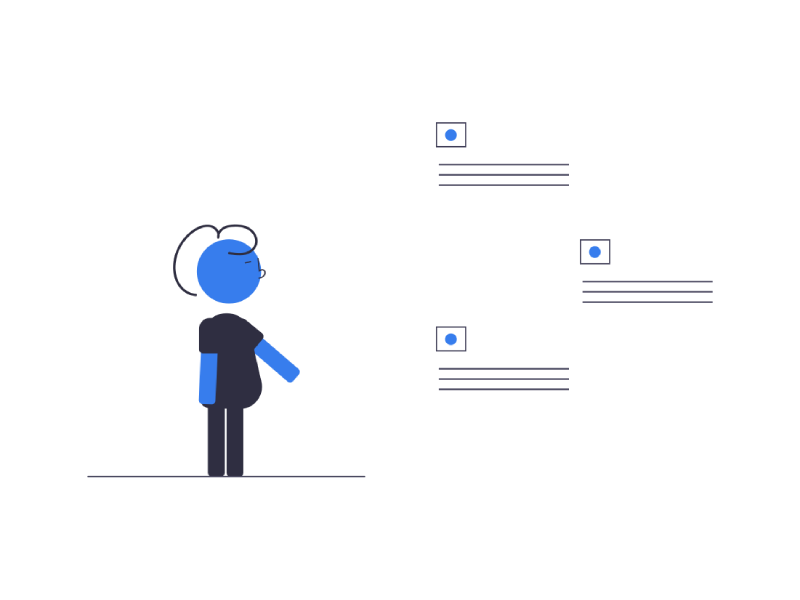A content audit is paramount for improving your website’s performance. It checks every part of your site to ensure it meets your business goals. Like checking stock in a store, during the audit, you find out what works, what doesn’t, and what needs improvement.
Setting clear goals helps make this process effective and aligned with your company’s aims. Tools like Screaming Frog or Google Analytics are useful in this regard.
Checking if your content is up-to-date and engaging is a must since outdated material can negatively impact the rest of your site.
Removing useless content keeps your site organized while monitoring changes helps prevent problems. Regular audits also help improve performance.
Let’s take a look at how to do it properly:
Define Your Goals
Before starting a content audit, think about your goals. Knowing what you want to achieve with the audit makes the process easier, similar to planning a route before a trip.
Identify the purpose of the content audit
A content audit checks what content works and what doesn’t on your website. Through it, you can find out why some pages attract many visitors and others don’t. It also shows whether your content is current and helpful for visitors.
The main purpose is to separate effective content pieces from ineffective ones. This process ensures every post or page contributes to attracting and retaining visitors. Think of it as a spring cleaning for your website, keeping only the best content visible.
Align goals with business objectives
Your website is a tool for achieving business goals. Every piece of content should work hard to meet these objectives. Aligning your content with business aims is critical.
Doing a content audit helps ensure that every article, blog post, or page on your website supports your overall goals of driving more sales or getting more sign-ups. A content audit turns vague hopes into specific, achievable targets.
It allows you to see clearly what you should aim to achieve and how to find the best way to get there.
By doing a content audit, you move from guesswork to strategy, aiming directly at your target for better results.
Compile a Content Inventory
Gather and review every piece of content from your website like you’re on a treasure hunt. Think of using tools as your sitemap to speed up the process and leave no stone unturned.
Gather all website content assets
A successful content audit requires a full inventory.
Use tools such as Screaming Frog or Google Analytics for this task. These help organize your content into a list and highlight both popular items and those less viewed.
Use tools to streamline the process
Screaming Frog locates URLs for you. Google Analytics displays the performance of each page. These tools accelerate the gathering process so you can concentrate on evaluation.
Using these tools transforms difficult tasks into something achievable.
After you account for all the content pieces you have, you’ll be able to identify what’s lacking in your strategy and what will help you boost SEO rankings.
Categorize and Organize Content
During the content audit, organize your articles and other pieces so you can easily find and use them.
– Sort through your content,
– Group similar items together,
– Improve accessibility.
Group content by type, topic, or format
Put all blog posts under one label and product descriptions under another, similar to using stickers for boxes when moving. This setup simplifies content analysis later because every piece is in its proper place.
By conducting a content audit this way, it becomes straightforward to manage and update website content efficiently.
Create a clear structure for analysis
Grouping your website’s content allows for the swift locating of items. Assemble content based on its type, topic, or format for better arrangement. It makes browsing your website simpler.
After arranging, look into the performance of each content piece. Identify the posts that draw the most attention and which ones go unnoticed on the internet. It’ll help you decide what to keep, modify, or delete to enhance your website.
Analyze Content Performance
Throw on your detective hat because it’s time to dig deep into how your website content is doing. We’re talking about rolling up your sleeves, looking at the numbers, and figuring out what stories they’re telling you about traffic, keywords, and how much folks stick around or bounce.
Measure SEO metrics (traffic, keywords, rankings)
Start by checking your website’s SEO performance. Look at visitor numbers to gauge traffic levels. Then, identify which keywords are drawing people in. Make sure these keywords match what you’re offering.
Also, check where your pages stand in search results for these terms. Higher positions mean more visibility for your content.
Next, measure user engagement by looking at time spent on a page and bounce rate metrics. This data shows whether visitors find what they need or leave quickly because the content doesn’t meet their expectations.
Evaluate user engagement (time on page, bounce rate)
After checking SEO metrics like traffic and keywords, look at how users engage with your site. User engagement shows if visitors find what they need or leave quickly. If people spend a lot of time on a page, they likely find the content useful.
But, if many leave right away, it’s a sign to review those pages.
Tracking these measurements is key for a successful content audit. Pages that visitors exit fast need quick fixes. They might not meet expectations or lack important information. This step is vital because it helps create content that your audience finds valuable.
In short, focusing on user interaction guides improvements in your content audit strategy, making sure you offer what readers are searching for.
Assess Content Quality
Look at your content as if you’re checking vegetables for freshness. Decide to keep, update, or remove based on its current relevance and accuracy.
Check for accuracy and relevance
Check your content for accurate and current information. False or outdated data can confuse and irritate readers. Update old statistics or examples to keep your site reliable.
Pay attention to what your audience needs now, not past trends. People’s interests change over time. Remove old or repetitive content to make space for new articles that answer today’s questions.
This strategy ensures visitors find useful information each visit.
When doing a content audit, focus on removing anything that doesn’t serve your current audience. This process makes way for material that meets their present requirements, encouraging repeat visits for fresh insights.
Identify outdated or duplicate content
When you do a content audit on your website, you might find old or copied materials. It’s similar to discovering clothes in your closet that you no longer wear. Your goal is to identify and remove content that’s out of date or duplicated.
This process ensures your site stays fresh and attractive for visitors, which also makes search engines more likely to favor it. By getting rid of content that doesn’t work, you open up space for new content.
Keeping your website up-to-date and unique is crucial for attracting repeat visits and improving search visibility. So, start cleaning out the unnecessary bits to welcome the new ones.
Audit Accessibility and Inclusion
Making your website easy for everyone to use is smart for business. A content audit helps ensure your site is open and welcoming to all, boosting accessibility and inclusion.
Ensure compliance with accessibility standards
Make sure that your website is open and reachable to everyone, also taking people with disabilities into account. It includes adhering to specific guidelines that cater to people with hearing or vision impairments to engage with your content.
Use the resources and evaluations at hand for this aim.
Optimizing your site for accessibility expands your audience involvement.
Mind the color and font selections, as some combinations might prove challenging for people to observe clearly. Moreover, do not forget that screen readers are essential for users who are dependent on them.
Your site should incorporate explicit labels and descriptions for these applications to transmit information effectively.
While performing a content audit, integrate steps that evaluate and refine accessibility attributes. It confirms that all users can interact with and comprehend your site’s content with ease.
Review content for inclusivity
A content assessment should always encompass an inclusivity inspection. It goes beyond avoiding inappropriate language. Your website should also exhibit visuals and relay narratives that reflect everyone.
Concentrating solely on one kind of person might exclude others who don’t see themselves portrayed.
Employ instances that resonate with a wide audience. Consider whether your content reflects the diversity observed in the community. Incorporating diverse perspectives helps people from varying backgrounds to feel acknowledged and valued.
This approach is respectful and also propitious for business expansion. Websites showing inclusivity usually attract more viewers and prompt them to revisit.
Create an Action Plan
After you’ve reviewed all your content, it’s time to make a game plan. Figure out what needs a facelift, what should get the boot, and what’s missing from your lineup.
Identify content to update, repurpose, or remove
Start your content examination by seeking pieces that need enhancements or a total overhaul. Search for outdated blog entries that continue to draw in traffic, but could use fresh information or newer images.
If the content doesn’t meet your audience’s needs or doesn’t align with the current SEO guidelines, ditch it.
While honing out a plan of action, pinpoint the content pieces that will gain the most from enhancements and decide which ones to let go. By refreshing an old post with recent stats, you may draw more attention than composing something entirely new.
Revitalizing old content can notably improve your website’s worth without the necessity to construct completely new pieces of content. This strategy is efficient in terms of time and makes excellent use of existing assets.
Prioritize tasks based on impact and effort
A content audit is like fixing a leaky boat. You start with the biggest, easiest fixes first. For websites, it means updating popular but outdated posts or removing unused pages.
Making these smart updates can have a big impact.
Then, move on to actually making those changes to bring your website closer to its goals. This step involves hands-on work and improving your site piece by piece.
Update or optimize existing content
To update or make your content better, find the pieces that aren’t performing well. They might have low traffic or be of no interest to readers. Google Analytics can help you identify these weak spots.
Improve these articles by updating them with new information, adding relevant keywords, and making sure they’re clear and helpful for your audience.
Improvement isn’t just about updating – it also means removing what doesn’t work. If content is outdated or not resonating with your audience, it’s often best to remove it. It keeps your site updated and focuses on what’s important for both your goals and those visiting your website seeking answers or inspiration.
Monitor and Measure Progress
Keep an eye on the scoreboard. After implementing changes to your website content, tracking performance metrics is like watching your favorite team’s scores. Set a rhythm for regular check-ups because staying in tune with how your content plays out over time is the real game-changer.
Track improvements in performance metrics
After making changes from your content audit, watch your traffic numbers. Look for increases or decreases. Notice if visitors stay longer on your pages. See how your site’s search ranking changes.
This tracking is like scoring in a game, showing if the updates are working.
Schedule these reviews every few months. This strategy keeps you proactive. Your website stays optimized, attracting more readers and achieving higher rankings.
Set a schedule for regular audits
To keep your website fresh, regularly perform content audits. Aim to audit your content every six months or at least yearly. This schedule helps spot and fix problems early, avoiding bigger issues later.
Regular content audits align your website with business goals and improve SEO strategies. They ensure you are on the right path. Effective changes come from understanding how to do a content audit properly.
Conclusion
First of all, figure out why you need a content audit for your website. Organize all your content in one place. Next, check its performance. Ensure the information is accurate and easy to find for everyone.
Plan the necessary updates and start improving. Monitor progress to confirm improvements.
These steps are straightforward but effective for enhancing your site’s performance. They ensure visitors find what they’re looking for and enjoy their experience on your site. You might consider exploring these strategies further or asking experts for guidance. Minor adjustments can lead to noticeable improvements in visitor engagement.







